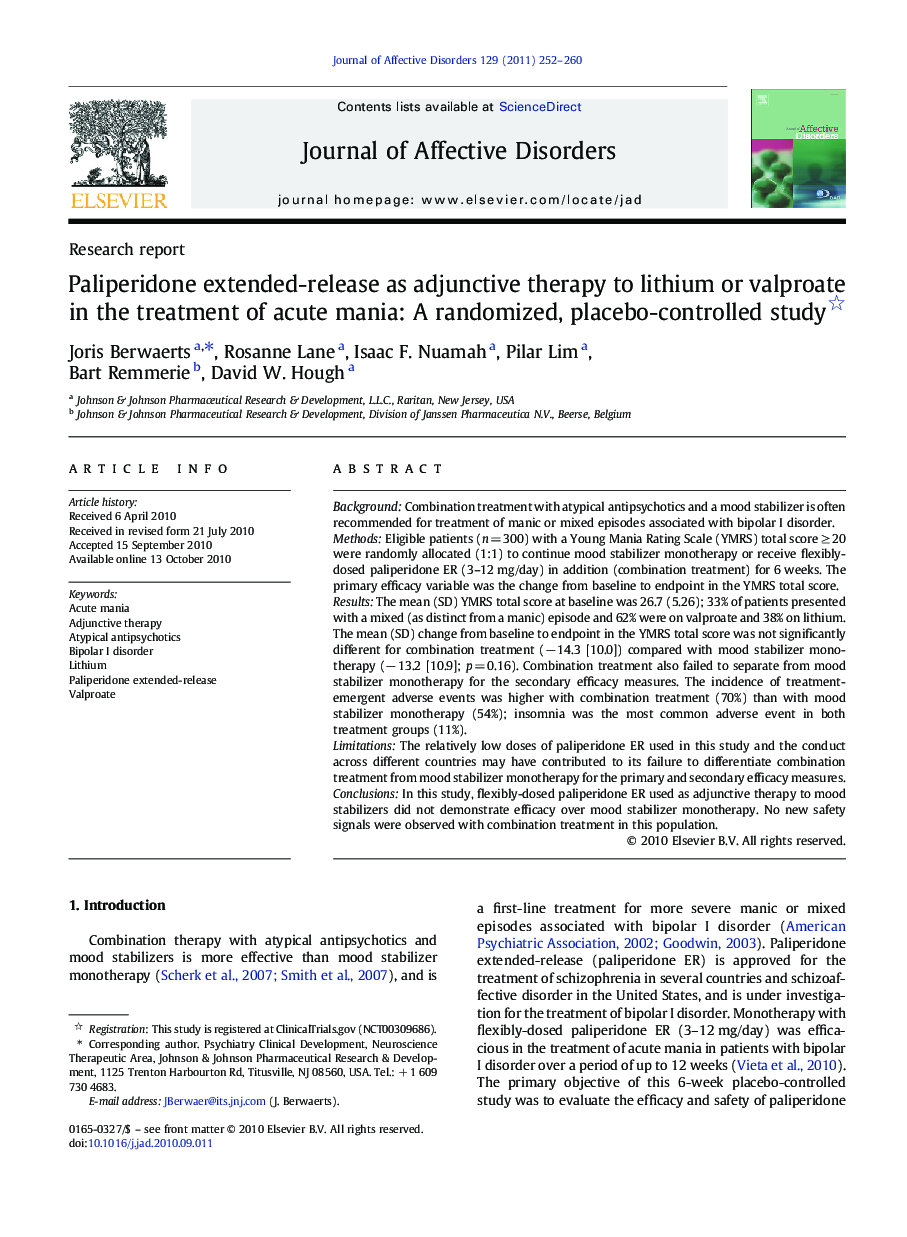| Article ID | Journal | Published Year | Pages | File Type |
|---|---|---|---|---|
| 4186532 | Journal of Affective Disorders | 2011 | 9 Pages |
BackgroundCombination treatment with atypical antipsychotics and a mood stabilizer is often recommended for treatment of manic or mixed episodes associated with bipolar I disorder.MethodsEligible patients (n = 300) with a Young Mania Rating Scale (YMRS) total score ≥ 20 were randomly allocated (1:1) to continue mood stabilizer monotherapy or receive flexibly-dosed paliperidone ER (3–12 mg/day) in addition (combination treatment) for 6 weeks. The primary efficacy variable was the change from baseline to endpoint in the YMRS total score.ResultsThe mean (SD) YMRS total score at baseline was 26.7 (5.26); 33% of patients presented with a mixed (as distinct from a manic) episode and 62% were on valproate and 38% on lithium. The mean (SD) change from baseline to endpoint in the YMRS total score was not significantly different for combination treatment (− 14.3 [10.0]) compared with mood stabilizer monotherapy (− 13.2 [10.9]; p = 0.16). Combination treatment also failed to separate from mood stabilizer monotherapy for the secondary efficacy measures. The incidence of treatment-emergent adverse events was higher with combination treatment (70%) than with mood stabilizer monotherapy (54%); insomnia was the most common adverse event in both treatment groups (11%).LimitationsThe relatively low doses of paliperidone ER used in this study and the conduct across different countries may have contributed to its failure to differentiate combination treatment from mood stabilizer monotherapy for the primary and secondary efficacy measures.ConclusionsIn this study, flexibly-dosed paliperidone ER used as adjunctive therapy to mood stabilizers did not demonstrate efficacy over mood stabilizer monotherapy. No new safety signals were observed with combination treatment in this population.
